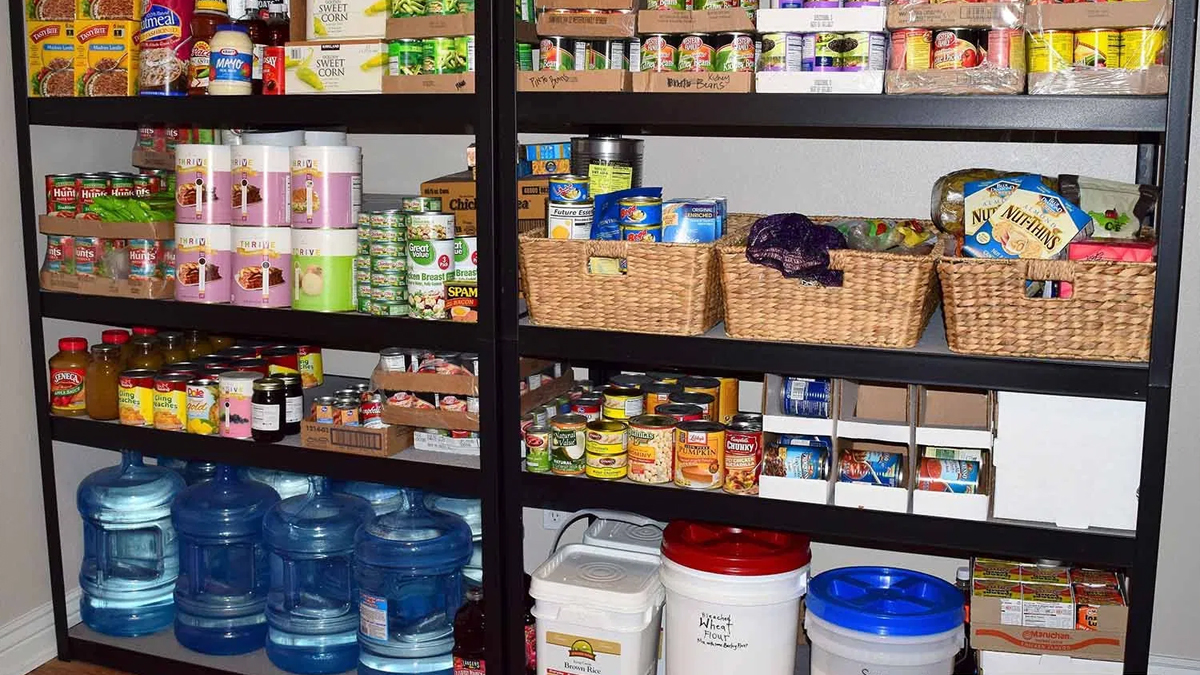Emergency Food Supply: What You Need to Know
The Ultimate Guide to Emergency Food Supply: What You Need to Know
In today’s unpredictable world, having an emergency food supply is crucial for ensuring you and your family’s survival during unexpected situations. Whether it’s a natural disaster, power outage, or global pandemic, an emergency food supply offers peace of mind when the usual food sources become unavailable. In this guide, we will explore everything you need to know about building, maintaining, and using an emergency food supply.
What is an Emergency Food Supply?
An emergency food supply is a stockpile of non-perishable food items designed to sustain individuals or families during times when access to fresh food is limited or nonexistent. It is an essential part of emergency preparedness, allowing people to survive when normal grocery shopping is disrupted.
The goal is to have enough food and water stored for at least a few days, but many experts recommend aiming for a supply that lasts up to two weeks or more, depending on the potential risk of a prolonged emergency.
Why is Having an Emergency Food Supply Important?
Disasters can happen unexpectedly, often leaving communities without access to food and water. In such situations, emergency responders may take days to reach affected areas. Without proper planning, individuals and families can quickly run out of essential supplies, making a bad situation even worse.
An emergency food supply can provide much-needed security in the following scenarios:
- Natural disasters: Hurricanes, floods, earthquakes, and other events can cut off access to food and water.
- Power outages: Extended power outages can spoil refrigerated food, leaving you without fresh meals.
- Pandemics: As seen during the COVID-19 pandemic, supply chains can be disrupted, leading to food shortages.
- Economic downturns: Job losses or economic instability can limit your ability to purchase groceries.
- Political instability: Civil unrest and conflict can disrupt local food supplies.
Essential Components of an Emergency Food Supply
When preparing an emergency food supply, it’s crucial to consider a variety of factors to ensure that your needs are met during an emergency. Here are the key components:
1. Non-perishable Food Items
The backbone of any emergency food supply is non-perishable food that has a long shelf life. Common choices include:
- Canned goods: Vegetables, fruits, beans, and meats are excellent options. Ensure you have a manual can opener.
- Dried foods: Rice, pasta, lentils, and beans are staples that can last for years.
- Dehydrated meals: Many companies sell freeze-dried meals that can be rehydrated with water, providing a convenient and long-lasting food source.
- Grains and cereals: Oats, quinoa, and granola can provide energy-dense meals.
- Nut butters: Peanut butter and other nut butters are protein-rich and last a long time.
- Dried fruits and nuts: These make for nutritious snacks that are easy to store.
- Powdered milk: A reliable source of calcium and other nutrients when fresh milk is unavailable.
- Energy bars and meal replacement bars: These are lightweight, easy to store, and provide balanced nutrition.
2. Water
Water is more important than food in an emergency situation. Humans can survive weeks without food but only a few days without water. It’s recommended to store at least one gallon of water per person per day for drinking and sanitation. For a family of four, that equates to 28 gallons for a week.
3. Cooking and Heating Equipment
If the power goes out, you’ll need a way to cook food. Consider including the following:
- Portable stove or camping stove: Make sure you have extra fuel.
- Solar oven: An eco-friendly option that doesn’t require fuel.
- Firestarter kit or matches: If you need to cook outdoors.
4. Special Dietary Needs
If anyone in your household has specific dietary requirements (e.g., gluten-free, diabetic-friendly, or vegan diets), be sure to take this into account when stocking your emergency food supply.
How to Build a Well-Rounded Emergency Food Supply
When creating an emergency food supply, balance is key. You want to ensure that your food provides essential nutrients while also being convenient and easy to store. Here are some tips:
1. Variety is Important
Eating the same type of food every day can lead to “food fatigue,” where the person becomes reluctant to eat because of boredom. Include a wide range of food types, such as different proteins, carbohydrates, and fats, to maintain balanced nutrition and keep meals interesting.
2. Pay Attention to Shelf Life
Always check the expiration dates when building your emergency food supplly. Items like canned food and dried beans can last for years, but others may have a shorter shelf life. Organize your supplies so that older items are used first.
3. Rotate Stock Regularly
To avoid wasting food, rotate your stock by using older items in your day-to-day meals and replacing them with fresh supplies. This ensures that your emergency food is always up to date.
4. Consider Nutrient Content
While calorie count is important, focus on nutrient-dense foods to ensure that you’re getting the vitamins and minerals you need. Foods rich in protein, fiber, and healthy fats are essential to maintaining energy levels during stressful situations.
Emergency Food Supply for Short-Term and Long-Term Scenarios
The amount of food you should store depends on the type of emergency you are preparing for. Let’s break it down into short-term and long-term needs:
Short-Term Emergency Food Supply
Short-term emergencies, such as power outages or natural disasters, typically last a few days to a week. In this case, you’ll want to have enough food and water to sustain your household without needing to leave your home. Focus on easily prepared meals that don’t require a lot of cooking.
Long-Term Emergency Food Supply
For long-term emergencies that can last weeks or even months, you need a more extensive stockpile of food. In addition to non-perishable items, you may want to consider investing in bulk food storage options, such as large bags of rice, beans, and freeze-dried meals. You should also think about food preservation techniques, such as canning or dehydrating your own food.
How to Store Your Emergency Food Supply
Proper storage is essential to maintaining the quality and shelf life of your emergency food supplly. Follow these guidelines to ensure your food remains safe and edible:
1. Cool, Dry Location
Store your food in a cool, dry place away from direct sunlight. Extreme temperatures and humidity can reduce shelf life and cause spoilage.
2. Airtight Containers
Use airtight containers to keep pests out and maintain freshness. Consider vacuum sealing dried goods to further extend their shelf life.
3. Label and Organize
Clearly label each item with its expiration date and organize your food by type for easy access. Use shelves or storage bins to keep everything neat and accessible.
Supplementing Your Emergency Food Supply
In addition to stockpiling food, it’s wise to consider other methods of ensuring a steady food supply during prolonged emergencies. Some options include:
1. Gardening
Starting a vegetable garden can provide fresh food to supplement your emergency stockpile. Vegetables like tomatoes, potatoes, and lettuce are easy to grow and can be preserved for later use.
2. Hunting and Fishing
If you live in a rural area, hunting or fishing can be viable options for obtaining fresh protein. Be sure to have the necessary tools and skills to safely catch and prepare food from the wild.
Emergency Food Supply for Pets
Don’t forget about your pets! They rely on you for their food as well, and it’s important to have enough pet food to last during an emergency. Store at least a week’s worth of food for each pet and ensure you have clean water available for them too.
Final Thoughts on Emergency Food Supply
Having an emergency food supply is an essential part of being prepared for unforeseen events. By planning ahead, you can avoid panic during a crisis and ensure that you and your loved ones are well-fed and hydrated. Start small, build over time, and remember to rotate your stock to keep it fresh. Your emergency food supply could be the key to survival in the face of adversity.
Preparedness is about more than just food—it’s about peace of mind. Start building your emergency food supplly today and be ready for whatever life throws your way.














Post Comment